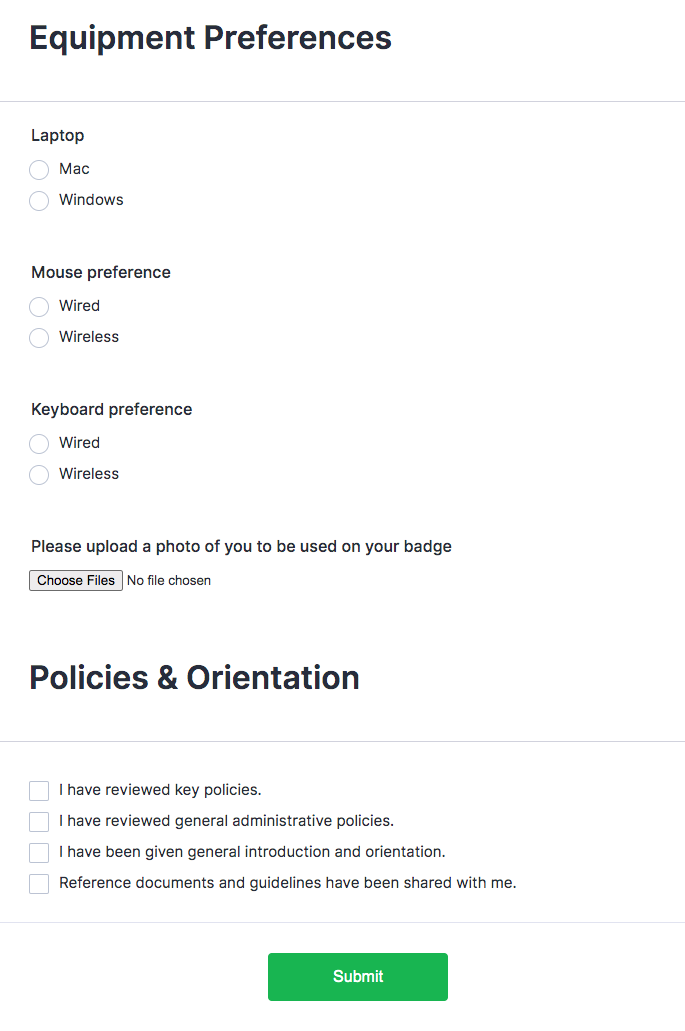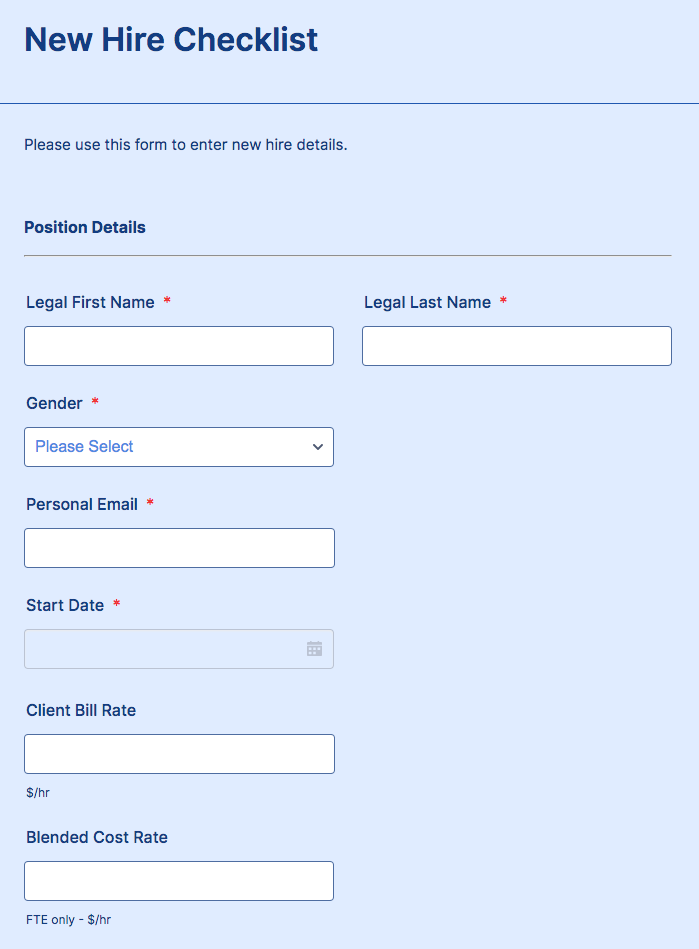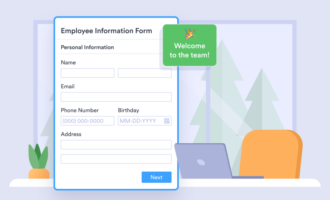Remote onboarding checklist steps
- Communicate with the new hire
- Gather employee new hire information
- Collect supplemental forms
- Follow through with employee feedback
Structured onboarding is a critical step in setting up new employees for success. Now that many employers are shifting to remote workforces, it’s essential to consider the unique requirements and situations involved in remote onboarding.
Onboarding sets up each employee for success
The key to onboarding success is to set clear boundaries and expectations. New employees need to know the company’s policies and values. Your onboarding process sets the tone, especially when employees don’t have in-person interaction with managers and coworkers.
When designing a remote onboarding checklist, make sure to do the following:
- Gather all necessary new hire information from each person.
- Help virtual employees overcome common remote work challenges.
- Give remote employees an opportunity to develop connections with teammates and managers.
- Introduce new hires to company tools, systems, and communication platforms.
- Boost company culture and engagement from a distance.
The problem with remote onboarding is that it’s easy for small details to slip through the cracks. When a person isn’t physically in the office, the possibility of HR and management potentially overlooking some of the most important parts of the onboarding process increases. You can prevent these omissions by designing a step-by-step process for remote onboarding.
1. Communicate with the new hire
Create a system to identify who is responsible for communicating with the new employee. Share information with the new hire before their first day so they know what to expect when their shift begins.
Here are a few talking points you might include in new hire communication:
- Videoconference links and access instructions
- A detailed agenda for the first week
- Information about technology and equipment
- Meeting times for each onboarding session
- A digital version of your employee handbook
- Literature about company values
- Contact information for managers and team members
Also, be sure to provide specific instructions about anything else the employee needs to do to prepare. For example, if you’re hosting onboarding meetings over videoconference, the new hire needs to have a strong internet connection and a quiet space to meet.
Keep in mind that this might be the first time the employee is working remotely. It’s best to be as detailed as possible when providing instructions for meetings and detailing work expectations.
2. Gather employee new hire information
Previously, new hires completed forms in the office on their first day of work. Your organization regularly keeps this employee information on file, including personal information and employment status.
Now that you’re hiring employees to work from home, it doesn’t make sense to send people printed pages. Digital forms offer a streamlined, efficient way to collect new hire information from anywhere.
Jotform offers forms templates that you can customize to match the information for each job opening. These are some of the most popular new hire forms for remote onboarding:
There are additional Jotform templates that will help streamline your new hire process. Review these employee information forms to find the right template to help you get started.
3. Collect supplemental forms
In addition to personal information about the employee, your HR team also needs supplemental information. The main new hire paperwork is necessary for determining an employee’s work eligibility. Supplemental forms are useful for collecting other information.
Jotform provides templates for other forms you might include in the new hire process. For example, you might have each employee fill out an emergency contact form. Or you might find that asking certain new hire questions is a useful way to learn more about each person for team-building purposes.
4. Follow through with employee feedback
Asking each person to fill out a new hire feedback form can be really helpful in measuring the effectiveness of your remote onboarding process. This information helps you identify gaps in the process. You can use this information to improve your remote hiring checklist going forward.
Make sure to touch base with your new team member after their first week, month, and quarter. These calls give you insight into the difficulties they might be facing. You need to be sure that each person is settling into their new roles and receiving the appropriate training to help them succeed as productive members of the team.For more information about successful remote onboarding, check out our ultimate guide to new employee onboarding. This information can help you build a successful onboarding system and leverage digital forms that every employer needs.


























Send Comment: